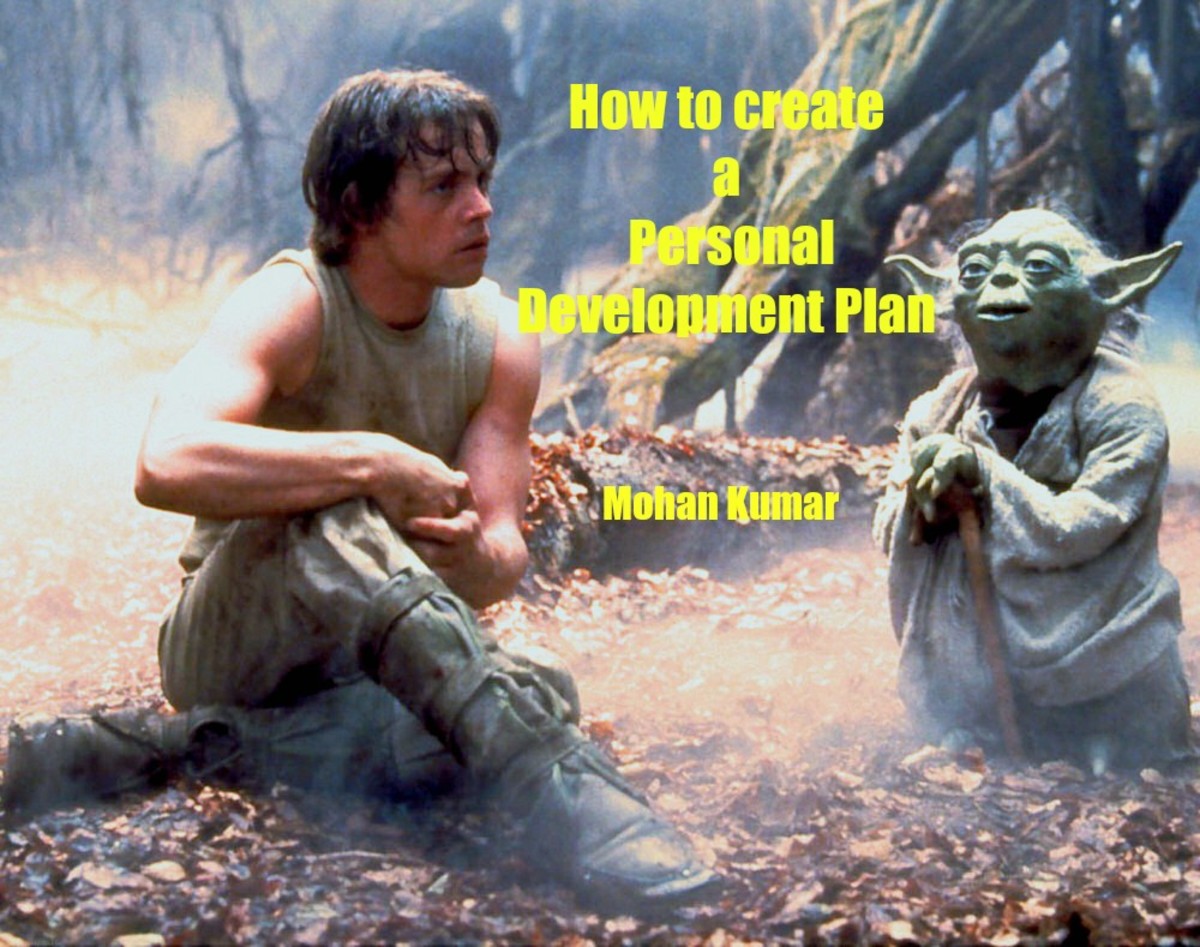How to Project Self-Confidence
How do they do it?
Some people just have it made. They are voted “most likely to succeed” in school. They receive job offers in their field right after graduation from college and climb the corporate ladder with ease. They marry the smartest, most attractive, most popular man or woman in town. They live in nice neighborhoods and send their children to the finest schools. They are respected members of the community. Others solicit their personal and professional advice. They are in charge of any situation—an unofficial leader that takes action when it is required. They enjoy life and live well.
These folks appear to be luckier than everyone else. How do they do it? How do some people seem to have it made from the very beginning? There is no simple answer to these questions, but the most successful people typically share at least one attribute: they radiate self-confidence. An aura of self assurance emanates from their every action. They exude a personal sense of worth and security. They are charismatic.
Your inner voice is likely shouting in protest, “That’s not fair! I’m a nice person! I’m likable! What can I do to get the same breaks?” Luckily, all is not lost for those who are a bit more reserved. We can teach ourselves to behave in a way others notice and respond to positively. We can learn to display self-confidence by focusing on specific behavioral characteristics. Let’s examine each of these behavioral keys and explore how they relate to an image of self-confidence.
Images of self-confidence







Keys to projecting self-confidence
1. Eye contact. Powerful people are not afraid to look into someone’s eyes. If someone looks into our eyes and we do not return their gaze, it is interpreted as a lack of confidence or even an acknowledgement of inferiority. There are people who exercise authority simply by staring at another individual until they look away. If we are uncomfortable with prolonged eye contact, we should not look down. Instead, we should make intermittent eye contact and gaze at the other person’s forehead the rest of the time.
2. Voice. The way we communicate says much about our self-confidence. We project poise if we speak in a deep voice which resonates from the chest with force and energy. The voice is an indicator of our emotional state, so tonal quality and the speed with which we speak must be considered. If our speaking voice is too high and fast, we are perceived to be nervous and insecure; speaking too slowly is viewed as indecisive. If we speak slightly slower than normal, it is said to indicate that we are intent on being heard.
3. Gestures. Powerful people usually keep their hands still and do not display nervous habits. Gestures that are deliberate and meaningful are used while speaking when emphasis is desired. Accomplished speakers typically practice and refine their use of hand gestures. Our gestures must always remain relaxed and natural; they should mirror the speed with which we’re speaking and never become flamboyant.
4. Posture. We reveal much about ourselves through our posture. When we’re sad, our head is down and our shoulders are slumped forward. Self-confident, charismatic people always exhibit good posture. The head is held high and the back is straight. Shoulders are pulled back and the chest is out. Good posture contributes to graceful movements that others equate with poise.
5. Walk. Self-assured individuals walk at a faster, more energetic pace than those with low self-esteem. When we walk in a slow, tired manner, we appear to be burdened with the weight of the world. It isn’t necessary to leave our friends behind in a sprint down the sidewalk, but a faster pace not only makes us seem more purposeful, it elevates our heart rate and increases the flow of blood to our brain and muscles. We are sharper and more attentive when we walk faster.
6. Smile. A simple smile makes us and everyone we interact with feel better. We radiate an inner peace and empathy that makes us instantaneously more likable and approachable. A smile informs all that the world is not getting us down. It affects the quality of our voice as well, making us sound friendlier and more alert. It is one of the simplest things we can do to exude self-confidence and one of the easiest, as well.
7. Personal space. Self-confident men and women command a larger personal space than others. Personal space translates into self-confidence in two ways: by respecting the personal space of others, and not flinching or moving away when others come close or touch us. If we calmly maintain our space when others have violated it, we will be perceived in a confident manner.
8. Personal habits. Are we dirty and dressed in sloppy or inappropriate clothes when we are in public? Do we need to comb our hair, brush our teeth, or shave? Do we hide behind sunglasses or countless layers of baggy clothing, as if trying to become invisible? It isn’t necessary to wear a suit or cocktail dress to the grocery store, but good grooming, attention to hygiene and dressing in an appropriate yet flattering way will demonstrate our self-respect. Do we smoke, drink or curse in public, allowing others to observe us in indulging our vices? Do we engage in excessive public displays of affection? Our actions also announce to the world how we view ourselves.
Final thoughts about self-confidence
Exuding self-confidence is a balancing act achieved by recognizing the distinction between assertiveness and aggressiveness. It is the difference between a faith in our convictions and the need to always be right. It is supporting others without deferring to them. Assertive behavior is perceived as confidence; aggression is viewed as weakness. This balance is maintained through accepting both our strengths and our weaknesses; and, of keeping success and failure in perspective. It is avoiding highs that are too high and lows that are rock bottom.
A swagger comes naturally to those with self-confidence—less so for those seeking to appear confident. This sounds obvious, but tools for projecting self-assurance and acquiring it are not identical. Posture and eye contact are signs of poise, but they are only indicators. Projecting confidence can help us develop it, but there are other factors, as well. The inner peace of self-assuredness is realized through setting and achieving goals and supporting the aspirations of others. It is derived from adherence to core values. It is also achieved through treating others with courtesy. Respect for others demonstrates a lack of fear and recognition that other people are not a threat to our hopes and ambitions.
Whether it is with a commitment to our values or the willingness to smile and stand tall when things aren’t going well, projecting self-confidence will ultimately transform us. When this happens, it will transform our luck, as well. It will allow us to make our luck.
And everyone will see it.

Self-help information from Amazon.com
Read other articles about business and self-improvement
- Telephone Skills and Techniques: The Art of Successful Communication
We live in a very different world now. Thirty years ago we wrote a letter or telephoned when we wanted to contact someone we couldn't meet face-to-face. In this new age we tweet, instant message,... - Working as an Independent Contractor: How to Earn More Money
Have you recently lost your job, or have you taken a pay cut to keep the position you have? You are certainly not alone. The United States economy is in a state most of us have never seen before,... - Independent Contractors: Assessing Your Value in the Market
There are many important details associated with being your own boss, and one of the most important is evaluating yourself and the viability of your business. As an Independent Contractor, you... - How to Listen Well to Others
I have known people to say things about me that are quite flattering. I have been graciously been referred to as intelligent, sensitive, or creative. (I confess Ive been called less flattering things,... - Ten Strategies for Working as an Independent Contractor
With the American economy in a state of crisis, unemployment is high and countless jobs have been permanently eliminated. Many businesses now look to virtual assistants or temp agencies to meet short and... - How to Save Money (A Few Cents at a Time)
Many families in America and around the world have been forced to survive with fewer financial resources than they previously enjoyed. Although experts proclaim the economy is improving, many are still... - Recognizing and Combating Isolation
Years ago a television commercial showed us a small child asking his father what he made per hour in wages at his job. When the father asked why his son wanted to know, the boy told him he wanted to buy an... - How to Fight Boredom: Five Strategies
The world is eaten up by boredom.... You cant see it all at once. It is like dust. You go about and never notice, you breathe it in; you eat and drink it. It is sifted so fine, it doesn't even grit on... - Functions of Effective Leadership
For the purpose of clarity, the word group shall be used in this article to represent any collection of individuals gathered for a shared purpose. From an early age in human development, people... - How to Quickly Get People to Like You
Many people are naturally engaging and friendly. They are first to introduce themselves in a crowded room and are eager to turn acquaintances into friends. Their friendliness is usually reciprocated,... - Time Management Skills: Don't Waste Time for Others
Everyone knows people who always show up fifteen minutes latefor everything. When they arrive, they wave their arms with a flourish and either quickly apologize or make a joke of their lack of... - Time Management Tools: A Convenience or Trap?
There are numerous books and articles devoted to time management, but we still seem to have very little free time. We make lists and group tasks. We organize, categorize, prioritize and analyze. We... - Using the Job Interview to Hire the Right Person
Its stating the obvious to tell you a company loses money when it is forced to replace employees. Some costs from personnel attrition are apparent, such as paying accrued vacation time and... - Twelve Things that can Disrupt Your Sleep
America has become a 24 hour society, and we are paying the price for the luxury of grocery shopping at 3:00 AM and working around the clock. The problem is so profound there are concerns that...








